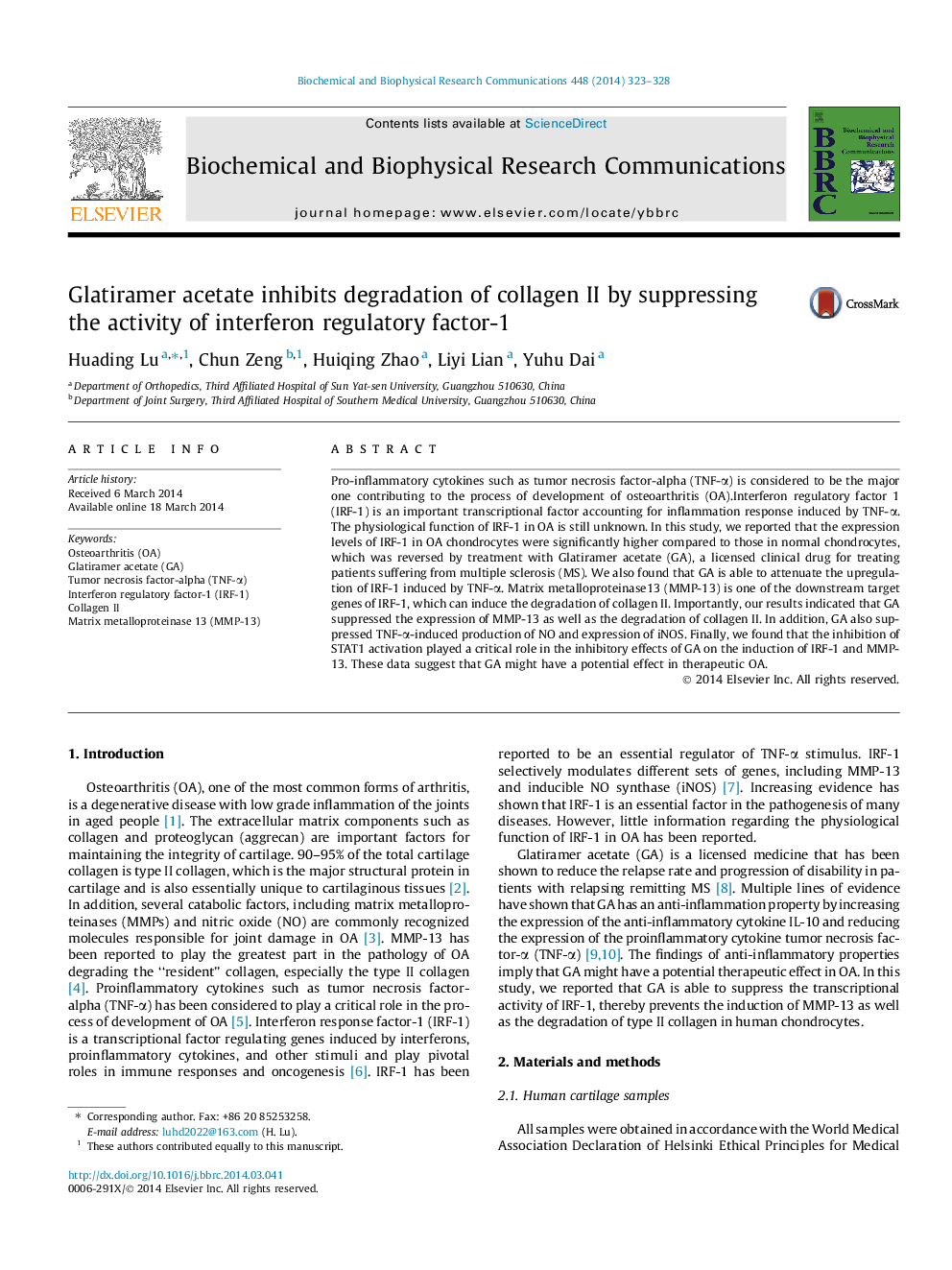| Article ID | Journal | Published Year | Pages | File Type |
|---|---|---|---|---|
| 1928507 | Biochemical and Biophysical Research Communications | 2014 | 6 Pages |
•IRF-1 is increased in OA chondrocytes.•GA reduced IRF-1 in OA chondrocytes and TNF-α treated chondrocytes.•GA inhibits one of IRF-1’s target genes MMP-13 and the degradation of collagen II.•GA also suppressed TNF-α-induced production of NO and expression of iNOS.•GA suppresses the induction of IRF-1 and MMP-13 via inhibition of STAT1 activation.
Pro-inflammatory cytokines such as tumor necrosis factor-alpha (TNF-α) is considered to be the major one contributing to the process of development of osteoarthritis (OA).Interferon regulatory factor 1 (IRF-1) is an important transcriptional factor accounting for inflammation response induced by TNF-α. The physiological function of IRF-1 in OA is still unknown. In this study, we reported that the expression levels of IRF-1 in OA chondrocytes were significantly higher compared to those in normal chondrocytes, which was reversed by treatment with Glatiramer acetate (GA), a licensed clinical drug for treating patients suffering from multiple sclerosis (MS). We also found that GA is able to attenuate the upregulation of IRF-1 induced by TNF-α. Matrix metalloproteinase13 (MMP-13) is one of the downstream target genes of IRF-1, which can induce the degradation of collagen II. Importantly, our results indicated that GA suppressed the expression of MMP-13 as well as the degradation of collagen II. In addition, GA also suppressed TNF-α-induced production of NO and expression of iNOS. Finally, we found that the inhibition of STAT1 activation played a critical role in the inhibitory effects of GA on the induction of IRF-1 and MMP-13. These data suggest that GA might have a potential effect in therapeutic OA.
